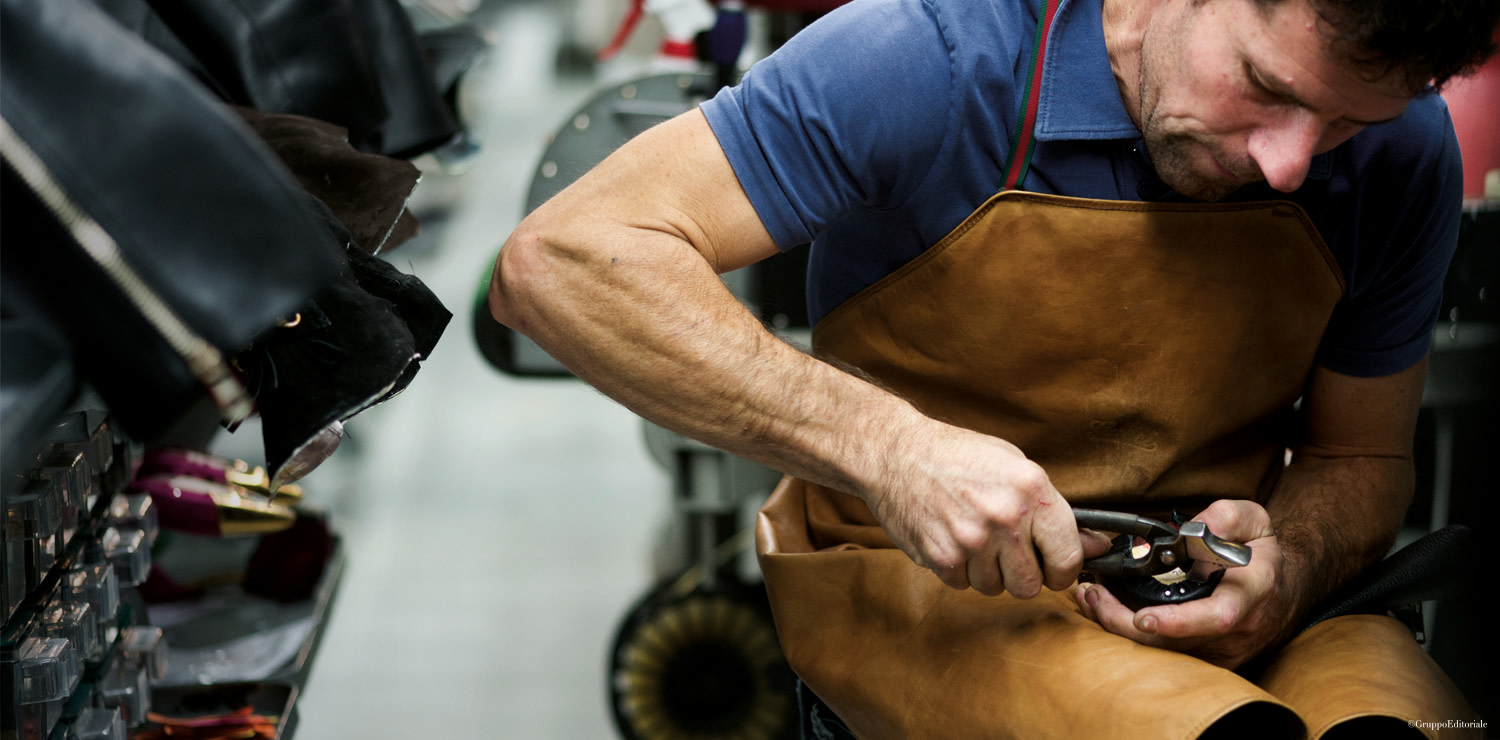Italian Creativity
In Italy, made-to-measure is the art that makes things immortal
Craftsmanship is the maker’s mark that distinguishes the history of Italy, where for centuries the art of making things by hand has ruled supreme. In order to embark on the handmade journey, would-be artisans enter the workshops as children, where they begin by watching how it’s done; only much later are they assigned a master artisan, who initiates them into the secrets of the craft. The tradition of craftsmanship in Italy is a direct descendant of art and architecture: it started to bloom in the civil communities that saw the birth of Guilds in the thirteenth century, and reached its peak in the 1500s and 1600s, thriving at the great Renaissance courts of Venice, Milan, Mantua, Ferrara, Florence, Urbino and Rome. You have to understand that, in those centuries, each one of those cities - not for nothing often called ‘cities of art’ - was like a new Athens or the future Paris, Versailles, London, New York, Seattle, Shanghai. A concentration of mind-boggling riches, universal centers of intellectual output, cradles of sophisticated civilizations, in love with beauty of every form and kind. These are the hidden seeds in the DNA of high-end Italian craftsmanship, which spread and pollinated area by area, court to court, each sector finding its genius loci, its attitudes and defining characteristics, solely and exclusively in its local context and local flavors. In more recent times, the cultural and artistic history of Italy has been reflected in the extraordinarily high level of its craftsmanship, which, with the help of pioneering visionaries, has fuelled an incredible adventure that today involves the whole world. In order to rise from the ashes of war, penniless but determined, our country armed itself with a will of iron and turned its face towards rebuilding. Italy knew how to work with wood, glass, ceramics, textiles and linen, which went into tablecloths and lingerie; how to embroider and crochet, how to work with straw, with leather; how to tailor clothes. We had to find a product image that would drive itself. It was fashion, along with its sister sectors, that invented itself from zero; and the fashion industry had the nous to introduce our craftsmanship to the world’s richest countries with a desire for novelty and beautiful possessions. It’s the same reason why so many big luxury companies make their products in Italy even today. It’s for the tactile quality of the prime materials, which the master artisans instinctively know how to select; it’s for the durability of the articles, which stand the test of time, and for the flair, versatility, reverence and intelligence of all those hands that work with the machines, or which have even learned to bend machines to their whims. It is Italian excellence made from perfection of movement, of passion, art, tradition and innovation: a spectacular universe of savoir-faire. It’s this that the public also comes back for, the fruit of high standards as opposed to serial, ephemeral consumption. Certain parts of Italy are known first and foremost for a particular kind of craftsmanship. The tailors of Naples, for example, mainly produce menswear of a kind that a London tailor would be proud of. The fashion houses in Milan fly the flag of prêt-à-porter, while those in Rome tend to concentrate on high-end, made-to-measure pieces. A high percentage of leatherworking, especially leather for shoes, takes place in the Veneto region, where the cobbling tradition dates back to the thirteenth century and where the Venetian aristocracy would come onto dry land to buy their shoes. The Marche region has carved out for itself a niche in the artisanal production of bags and shoes. The Florentine leather district, which makes not only bags and shoes but also accessories and metallic details, is based at Scandicci but has stations also in the Sieve valley, the Arno valley and at Bagno a Ripoli, an area that accounts for a large number of Italian and international luxury brands. Gucci, Ferragamo, Celine, Prada, Valentino, Fendi, Dior, Louis Vuitton, Balenciaga, Leo France, to name but a few - they all prefer to produce here, because of the high quality that is at the root of everything. A ‘university’ of craftsmanship, where things are learned not from books but from the storied memories of people who had the hunger to learn and who themselves learned from their parents: so we arrive at today, constantly perfecting processes and techniques with those magnificent machines, the hands. And none more magnificent than those hands that have worked more than 700 years ago to preserve and restore the cathedral of Santa Maria del Fiore in Florence. They belong to the team that make up the Bottega dell’Opera del Duomo, based right there, in the heart of the city. They use tools exactly the same as those used in the Renaissance, and with them they make interventions on artworks of incalculable value, identifying damage and replacing it with identical, handmade elements.
Our publishing house has always been fascinated by the world of high craftsmanship. For many years, together with the two most important institutions in the sector - Associazione OMA (Osservatorio Mestieri d’Arte) and the Fondazione Cologni dei Mestieri d’Arte - we have published the best Italian master artisans on italia-sumisura.it.











